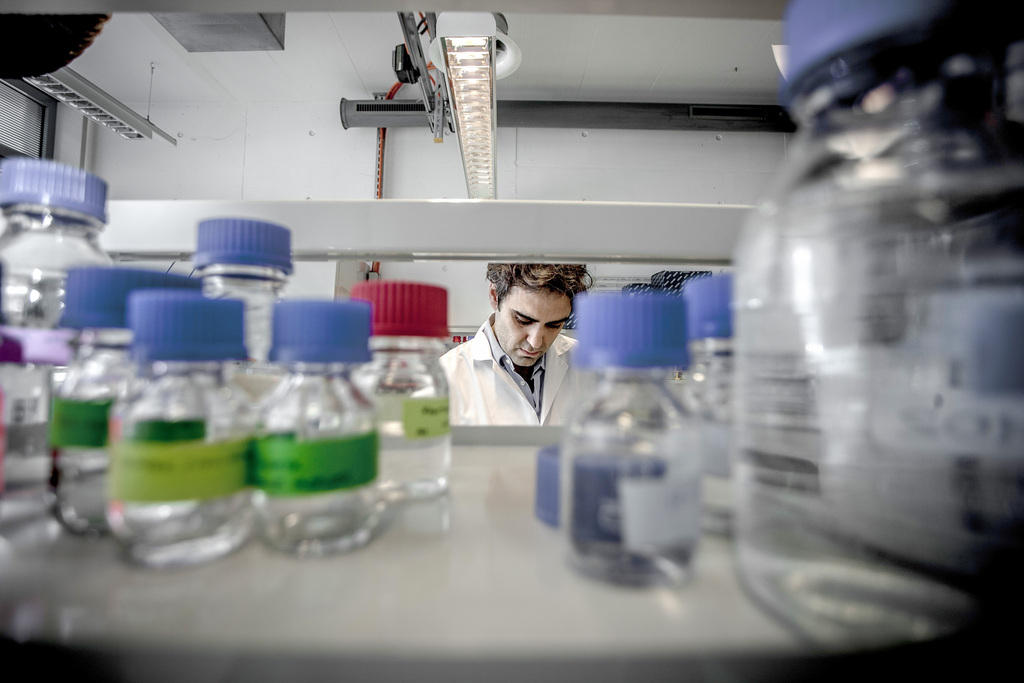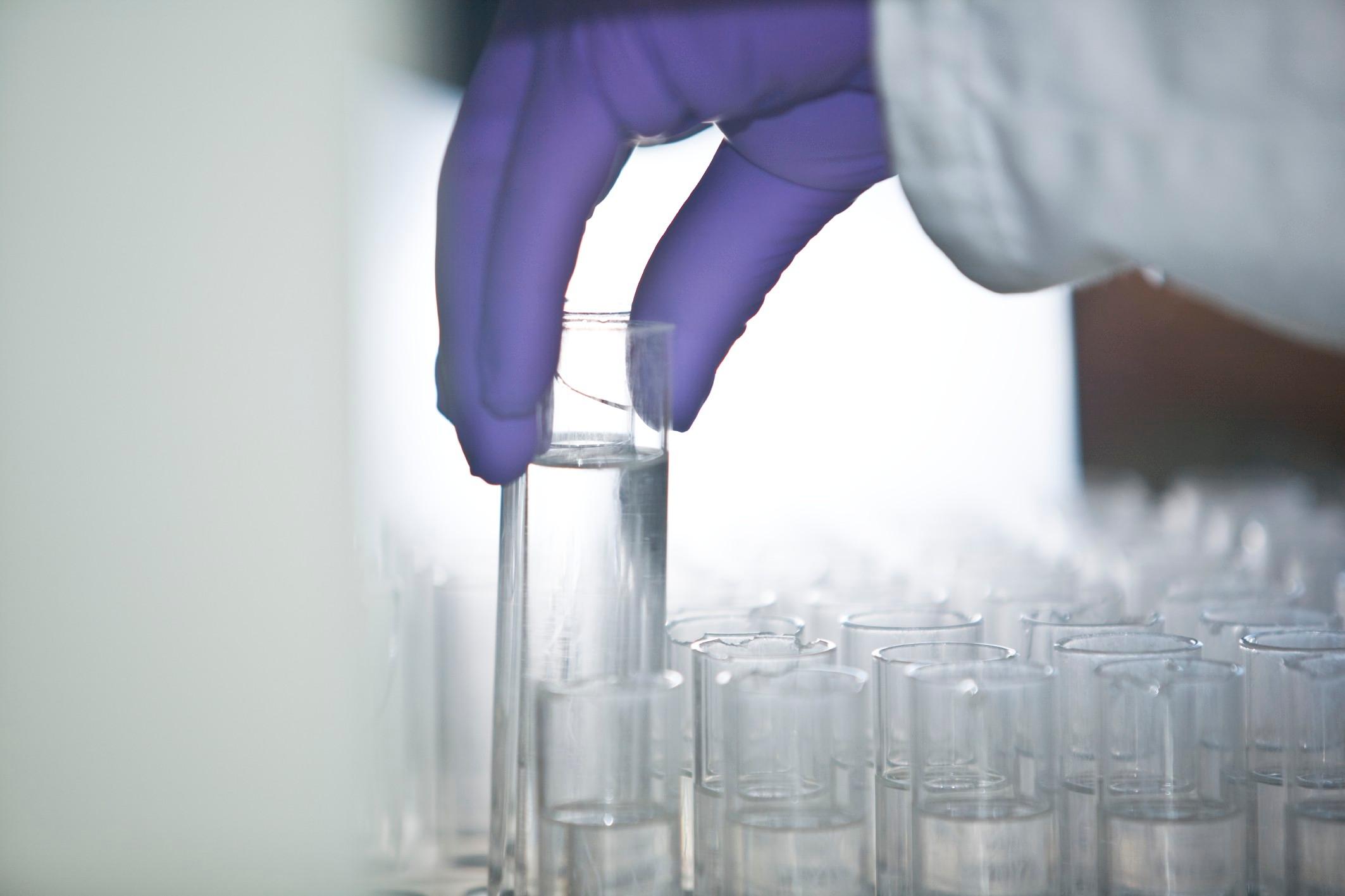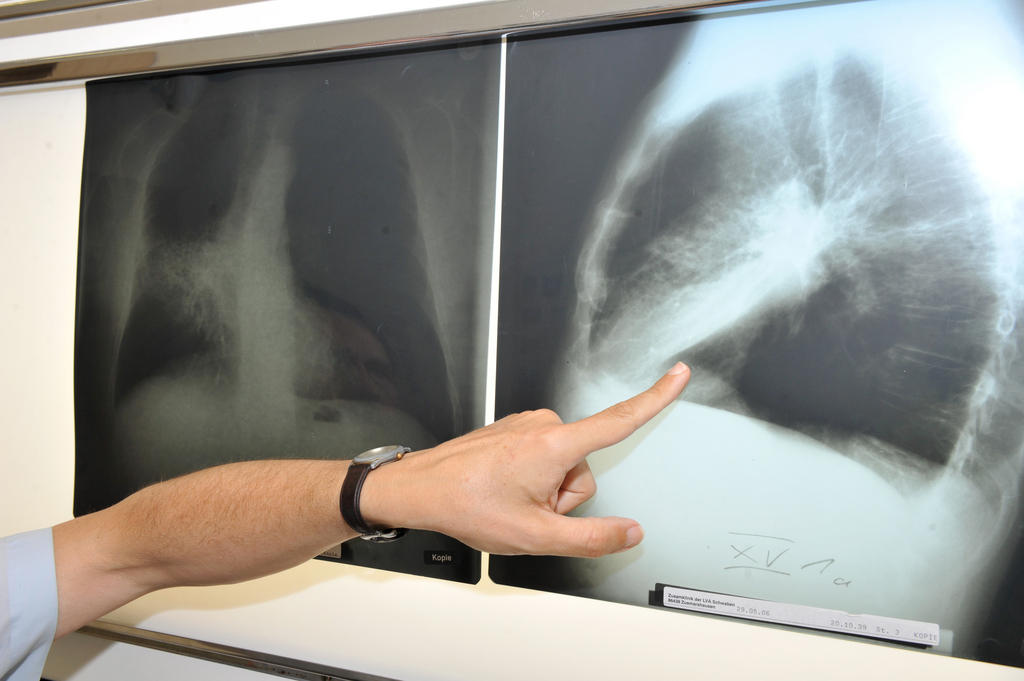High pharma margins squeeze health systems

Cancer drug prices are rising rapidly, and profit margins for pharmaceutical companies reach upwards of 80% for some medications according to a Swiss public television RTS investigation. Curing cancer for the masses could be challenging if healthcare systems are crippled by such expensive treatments.
A recent investigation by Swiss public television RTS found that some cancer treatments are billed at more than 80 times their manufacturing costs. Meanwhile, pharmaceutical companies are in a race to develop the next big life-saving cancer drugs.
Vas Narasimhan, CEO of Swiss pharmaceutical company Novartis, explained in a commentaryExternal link on CNBC that cell and gene therapies are bringing about a new era of cancer medicines “that are not just improving lives, they are saving them.”
But at what cost to people and health systems? A recent World Health Organization reportExternal link revealed that spending on cancer medicines is outpacing the growth rate of new cancer patients and healthcare expenditures globally – something the WHO believes is unsustainable.
Cancer diagnosis
According to the World Health Organisation (WHO), one in five men and one in six women worldwide develops cancer during their lifetime, and one in eight men and one in 11 women die from the disease, making it the second leading cause of death globally. In Switzerland alone, more than 50,000 people are diagnosed with cancer every year.
Disconnected prices
Pharmaceutical companies have typically defended high drug prices by pointing to huge investments in research and development, including clinical trials. But the WHO says high prices of cancer drugs have generated profits much higher than the possible costs of research. It found that for every dollar invested in cancer research, pharmaceutical companies earned on average $14.50 (CHF14.50) in revenue.
Calculations by RTS of specific cancer drugs show that final drug prices for a couple of top treatments bear little relationship to R&D and manufacturing costs.
According to estimates from biotech experts interviewed by RTS, a vial of the blockbuster breast cancer drug Herceptin costs around CHF50 to produce. In 2018, it was sold for CHF2,095 in Switzerland, 42 times its manufacturing cost.
This represents an 85% profit margin for Herceptin’s manufacturer, Swiss pharmaceutical company Roche. The drug has earned the company CHF82.8 billion since it came on the market 20 years ago. Similar margins were calculated for other drugs like Glivec from Novartis using manufacturing costs from a study by the University of Liverpool.
Roche did not confirm the breakdown of costs and margins. When asked about the accuracy of the calculations, Ulrike Engels from the Roche media relations team told swissinfo.ch that, “Roche doesn’t look at this on a product basis but rather, we keep our entire portfolio in mind. We don’t really comment on R&D costs per product.”
To Roche, the RTS calculations show a fundamental misunderstanding of how prices are set. Engels explained that, “prices are based on the benefits they bring to patients and society as a whole”.
Putting a price on life
While the concept sounds logical, the devil is in the details. More pharma companies are using “value-based” pricing that uses extra years of life, quality of life and healthcare savings, among other benefits, to assess value. Herceptin targets HER2-positive breast cancer, which is particularly aggressive and often strikes younger women, making the benefits of treatment particularly high.
However, there are still many uncertainties in value-based pricing, such as different perceptions of value and lack of clinical evidence, that “may lead to unaffordable prices for cancer medicines,” according to the WHO.
+ Read more about the $475,000 cancer drug from Novartis
Companies acknowledge there is a problem. Narasimhan explained in his commentary that “we face a fundamental challenge: how to pay for these therapies and make them available to patients in need”.
The WHO reports that current pricing policies (or the lack thereof) have led to considerable variability in the prices of cancer medicines within a country and across regions. In the absence of insurance coverage, it finds that cancer treatment is unaffordable for many patients. “A course of standard treatment for early stage HER2-positive breast cancer would cost about 10 years of average annual wages in India and South Africa and 1.7 years in the United States of America.”
Even in cases where value-based pricing would make sense, the WHO says that companies often place more emphasis on commercial goals including income expectations when setting prices.
Weak negotiating position
The high costs of cancer drugs are becoming prohibitive for many payers, putting pressure on healthcare systems. Universal coverage of cancer medicines alone, at 2018 prices, would greatly exceed a generously assumed budget of 5% of total healthcare expenditure. This is more than the estimated annual per-patient “budget” of US$800 in low-income countries to US$40,600 in high-income countries.
In 2018, cancer drugs cost Swiss insurers nearly CHF1 billion. According to the RTS report, the price for reimbursement for cancer-fighting drugs has increased by 54% in the last five years, from CHF603 to CHF931 million per year. In fact, Herceptin alone cost the Swiss health insurance system CHF257 million from 2014 to 2018.
In Switzerland, drug prices are negotiated and validated at the Federal Office of Public Health (FOPH). The FOPH uses two criteria to determine the price: a price estimate based on a group of nine European countries and a comparison to prices of other drugs used to treat the disease. But for many cancer drugs like Herceptin, there is no equivalent comparison.
So what options do health systems have? The lack of transparency on price setting puts payers like healthcare ministries in a vulnerable spot when negotiating prices with companies. Moreover, some countries fear being locked out of the market for certain drugs.
Engels explains that “at the end of the day, it is up to negotiators to define the individual price per country”.

More
The pharma holy grail: drugs for you, designed by you

In compliance with the JTI standards
More: SWI swissinfo.ch certified by the Journalism Trust Initiative












You can find an overview of ongoing debates with our journalists here . Please join us!
If you want to start a conversation about a topic raised in this article or want to report factual errors, email us at english@swissinfo.ch.